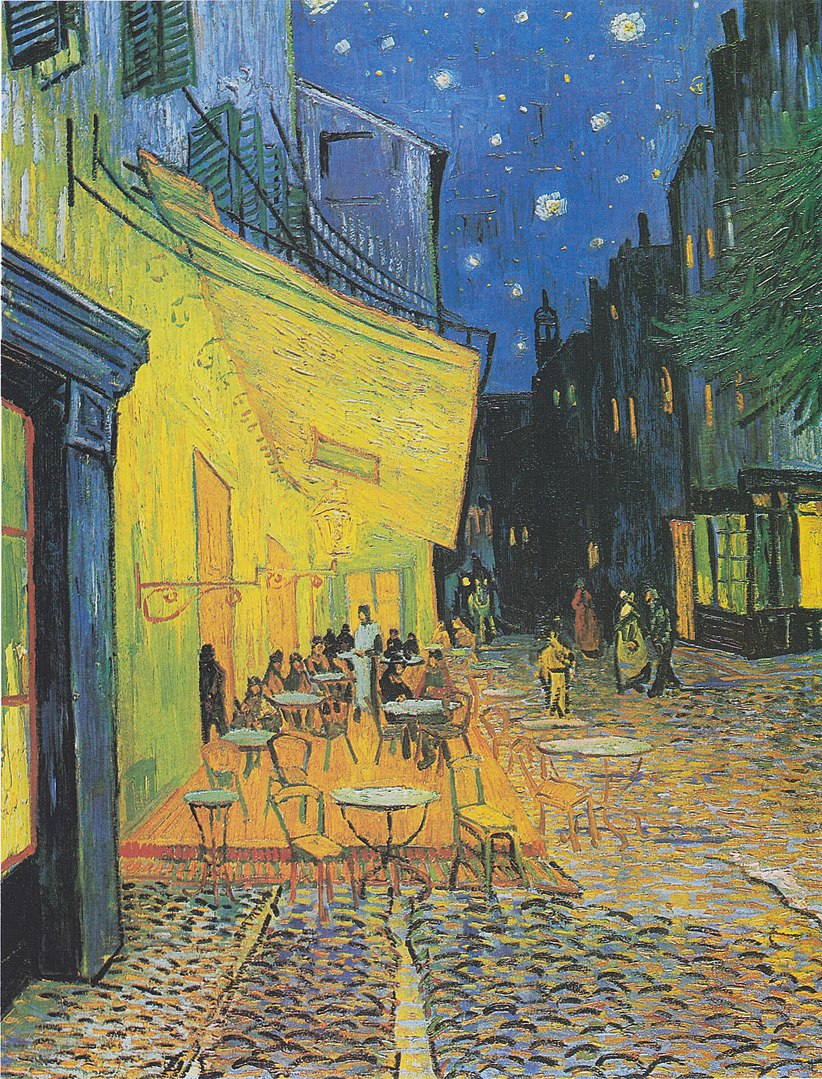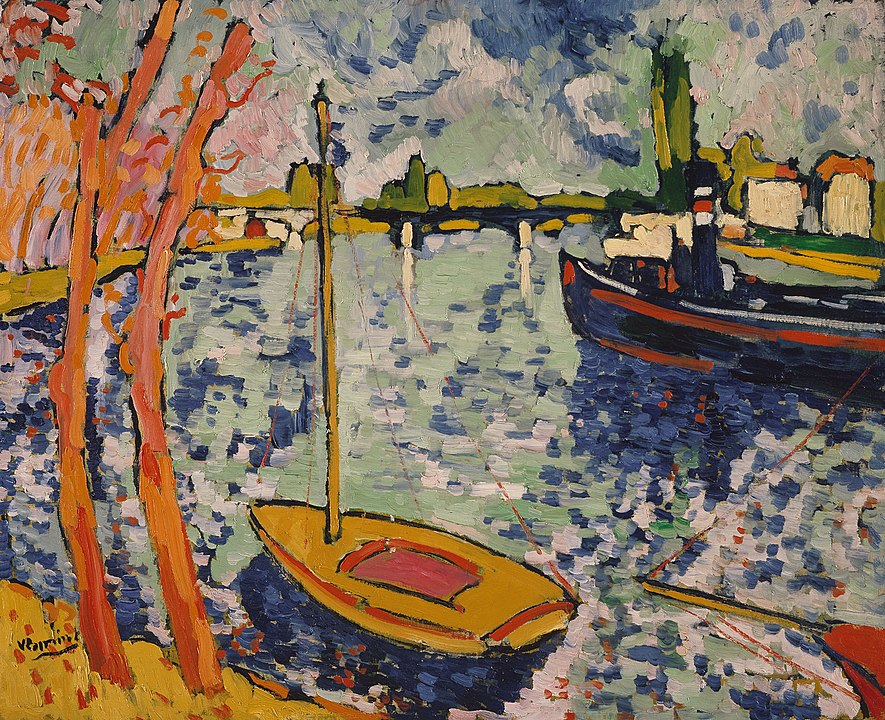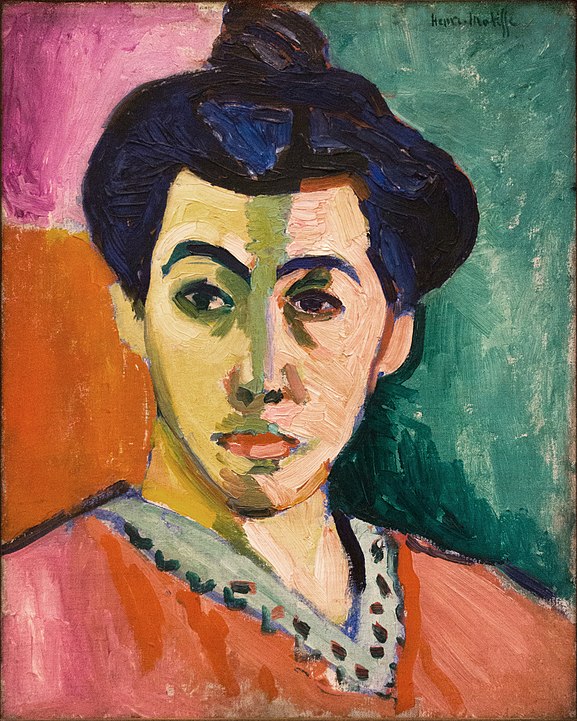
CURATOR’s EYE
3 minutes Art -SIVELIA-
Follow TRiCERA on Instagram and check out our creative artists
5%OFF & free shipping 1st purchase
FIRSTART5
10%OFF 2nd purchase after 1st purchase!
Welcome to TRiCERA
Hi there! We are pleased to have you here 🎉
Could you please describe yourself?
Guest

Vincent van Gogh,La Nuit étoilée, 1889
💡Art movement that bridged Impressionism and the avant-garde art of the early 20th century
💡A general term for the various forms of expression that emerged in reaction to Impressionism.
💡Gauguin, Cézanne, and Van Gogh are representative painters
Post-Impressionism is a term meaning " after Impressionism. It is a French artistic movement that developed between 1886 and 1905, and is said to describe the period between the last Impressionist exhibition in 1886 and the birth of Fauvism.
Post-Impressionism emerged in reaction to the naturalism-oriented Impressionism of the early Impressionists, whose goal was to "capture light as it is. The Post-Impressionist painters themselves probably had a " deimpressionist" or " anti-impressionist " attitude rather than a "post-impressionist" attitude.
Post-Impressionism emphasizes abstraction andsymbolism. This art movement has been categorized into a large number of categories, but the most representative ones include Navierianism,Neo-Impressionism,Symbolism,Croisonism,Pont-Tavernisme, andSyntheticism.
Paul Cézanne,Vincent van Gogh, andPaul Gauguin are generally considered to be the three major artists of Post-Impressionism.
Other well-known artists include the Neo-Impressionists Georges Seurat and Paul Signac, and the Symbolist Odilon Redon.
What they all have in common is that they were influenced by Impressionism when they were young. Whether the various artists mentioned above influenced each other or not is not really acknowledged. Therefore, it is important to note that there is no unified "post-impressionist style. Until the Impressionist period, a large artistic movement was born when a certain number of painters gathered at cafes and other places to discuss artistic theory. However, it can be said that from the time of Post-Impressionism, individual styles became more fragmented to the point where it is difficult to categorize them.
The Post-Impressionists shared a common dissatisfaction with the trivialization of subject matter and loss of structure in Impressionist painting, while they themselves had divergent opinions about the path they should take.
But of course, there were many points of common ground, which are listed below.
We will now describe the characteristics of each of them.
Georges Seurat and his followers worked on "pointillism," which utilizes the results of optical research to depict a myriad of small, brightly colored dots. 
Un dimanche après-midi à l'Île de la Grande Jatte, 1884 -1886
Paul Cézanne aimed to "make Impressionism as solid and durable as the works displayed in museums" by restoring order and structure to painting. Cézanne reduced the subject to basic, geometric forms while retaining the vivid colors of Impressionism.
Paul Cezanne,Still Life with a Curtain, 1895
This Dutch artist created bold works that directly reveal the artist's emotions and state of mind through vivid colors and distinctive brushstrokes.
Vincent van Gogh,Terrasse du café le soir, 1888
The term "Post-Impressionism" was coined by art critic Roger Fry in 1906.
Critic Frank Lutter, in his review of the Salon d'Automne in the October 15, 1910 issue of Art News, described Orson Frieze as "the leader of the Post-Impressionists.
Three weeks later, Roger Frye again formally used the term in an exhibition he organized at the Grafton Gallery in London in 1910, entitled "Manet and the Post-Impressionists." In addition, the magazine also carried an advertisement for an exhibition entitled "Post-Impressionists in France.
In addition to Manet, the exhibition featured a mix of Post-Impressionist artists, including Van Gogh, Gauguin, Redon, Cézanne, Matisse,Derain,Bramancq, and Neo-Impressionist painters, as well as avant-garde artists from the early 20th century, including Fauvism.
Maurice deVlaminck|The Seine at Chatou, 1906
André Derain,La jetée à L'Estaque, 1906
Portrait of Madame Matisse (The green line), 1905
Most of the artists in Frye's exhibition were younger than the Impressionist generation. Frye later explained, "For the sake of expediency, I have chosen these painters to be included in the exhibition.
For the sake of convenience, I had to give these painters a name, and I chose the most ambiguous and uncertain one, Post-Impressionism, which is relative to the Impressionist movement. It merely describes their temporal position relative to the Impressionist movement."
In his pioneering Post-Impressionist publication, From Van Gogh to Gauguin (1956), John Rewald focused on the early Post-Impressionist painters active in France, including Van Gogh, Gauguin, Seurat, and Redon, and studied their relationships. The following is a description of some of them that is relevant to this article.

Writer
TRiCERA ART

Vincent van Gogh,La Nuit étoilée, 1889
💡Art movement that bridged Impressionism and the avant-garde art of the early 20th century
💡A general term for the various forms of expression that emerged in reaction to Impressionism.
💡Gauguin, Cézanne, and Van Gogh are representative painters
Post-Impressionism is a term meaning " after Impressionism. It is a French artistic movement that developed between 1886 and 1905, and is said to describe the period between the last Impressionist exhibition in 1886 and the birth of Fauvism.
Post-Impressionism emerged in reaction to the naturalism-oriented Impressionism of the early Impressionists, whose goal was to "capture light as it is. The Post-Impressionist painters themselves probably had a " deimpressionist" or " anti-impressionist " attitude rather than a "post-impressionist" attitude.
Post-Impressionism emphasizes abstraction andsymbolism. This art movement has been categorized into a large number of categories, but the most representative ones include Navierianism,Neo-Impressionism,Symbolism,Croisonism,Pont-Tavernisme, andSyntheticism.
Paul Cézanne,Vincent van Gogh, andPaul Gauguin are generally considered to be the three major artists of Post-Impressionism.
Other well-known artists include the Neo-Impressionists Georges Seurat and Paul Signac, and the Symbolist Odilon Redon.
What they all have in common is that they were influenced by Impressionism when they were young. Whether the various artists mentioned above influenced each other or not is not really acknowledged. Therefore, it is important to note that there is no unified "post-impressionist style. Until the Impressionist period, a large artistic movement was born when a certain number of painters gathered at cafes and other places to discuss artistic theory. However, it can be said that from the time of Post-Impressionism, individual styles became more fragmented to the point where it is difficult to categorize them.
The Post-Impressionists shared a common dissatisfaction with the trivialization of subject matter and loss of structure in Impressionist painting, while they themselves had divergent opinions about the path they should take.
But of course, there were many points of common ground, which are listed below.
We will now describe the characteristics of each of them.
Georges Seurat and his followers worked on "pointillism," which utilizes the results of optical research to depict a myriad of small, brightly colored dots. 
Un dimanche après-midi à l'Île de la Grande Jatte, 1884 -1886
Paul Cézanne aimed to "make Impressionism as solid and durable as the works displayed in museums" by restoring order and structure to painting. Cézanne reduced the subject to basic, geometric forms while retaining the vivid colors of Impressionism.
Paul Cezanne,Still Life with a Curtain, 1895
This Dutch artist created bold works that directly reveal the artist's emotions and state of mind through vivid colors and distinctive brushstrokes.
Vincent van Gogh,Terrasse du café le soir, 1888
The term "Post-Impressionism" was coined by art critic Roger Fry in 1906.
Critic Frank Lutter, in his review of the Salon d'Automne in the October 15, 1910 issue of Art News, described Orson Frieze as "the leader of the Post-Impressionists.
Three weeks later, Roger Frye again formally used the term in an exhibition he organized at the Grafton Gallery in London in 1910, entitled "Manet and the Post-Impressionists." In addition, the magazine also carried an advertisement for an exhibition entitled "Post-Impressionists in France.
In addition to Manet, the exhibition featured a mix of Post-Impressionist artists, including Van Gogh, Gauguin, Redon, Cézanne, Matisse,Derain,Bramancq, and Neo-Impressionist painters, as well as avant-garde artists from the early 20th century, including Fauvism.
Maurice deVlaminck|The Seine at Chatou, 1906
André Derain,La jetée à L'Estaque, 1906
Portrait of Madame Matisse (The green line), 1905
Most of the artists in Frye's exhibition were younger than the Impressionist generation. Frye later explained, "For the sake of expediency, I have chosen these painters to be included in the exhibition.
For the sake of convenience, I had to give these painters a name, and I chose the most ambiguous and uncertain one, Post-Impressionism, which is relative to the Impressionist movement. It merely describes their temporal position relative to the Impressionist movement."
In his pioneering Post-Impressionist publication, From Van Gogh to Gauguin (1956), John Rewald focused on the early Post-Impressionist painters active in France, including Van Gogh, Gauguin, Seurat, and Redon, and studied their relationships. The following is a description of some of them that is relevant to this article.

Writer
TRiCERA ART